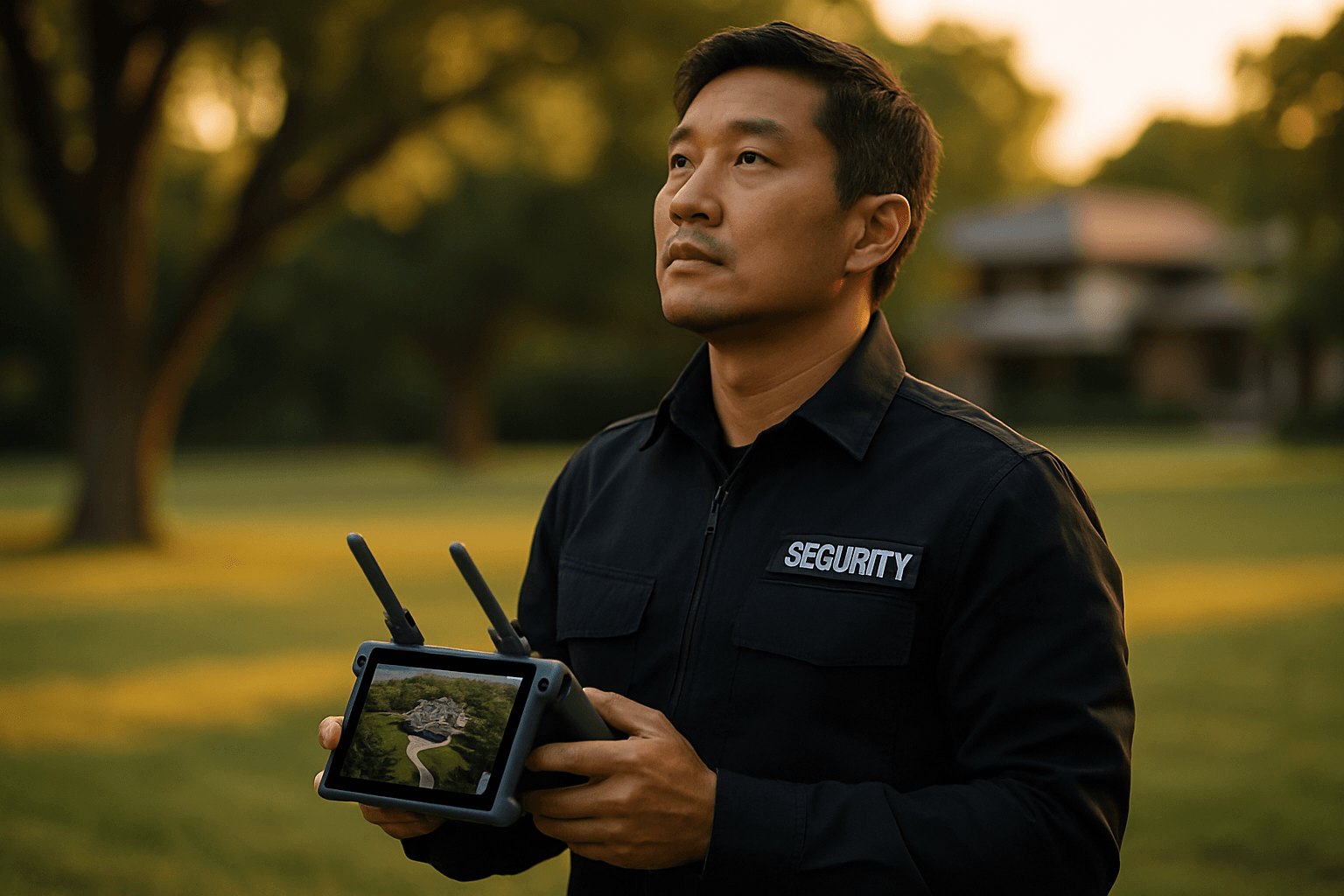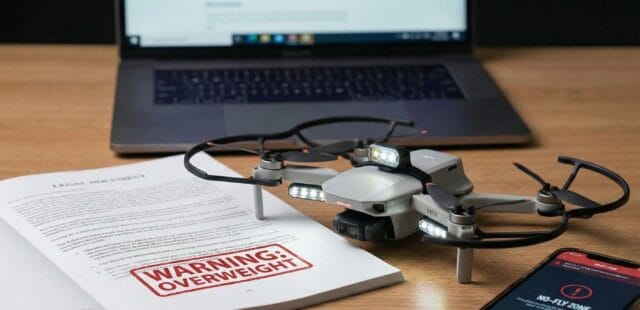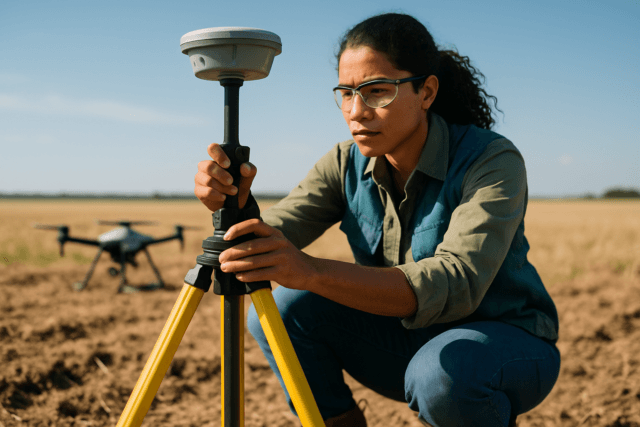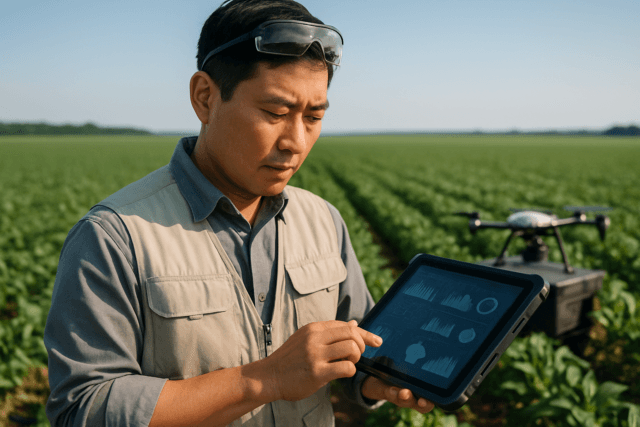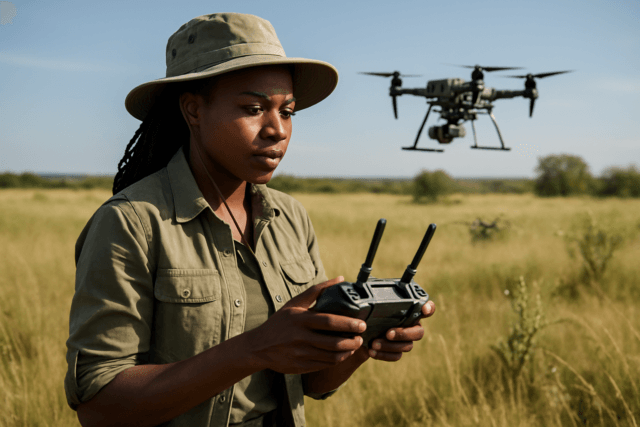Imagine a vigilant sentinel, effortlessly patrolling your entire property, day and night, in all weather conditions, providing real-time intelligence directly to your fingertips. This is no longer a futuristic fantasy but a present-day reality, as security drone solutions redefine private property monitoring. Unmanned Aerial Vehicles (UAVs), commonly known as drones, are rapidly transforming how individuals and businesses safeguard their assets, offering an unprecedented blend of enhanced surveillance, rapid response, and cost-effectiveness compared to traditional security methods.
As technology advances, these “eyes in the sky” are becoming increasingly sophisticated, moving beyond mere gadgets to become integral components of comprehensive security strategies. From deterring intruders to providing critical situational awareness, security drones offer a dynamic layer of protection that fixed cameras and human patrols alone cannot achieve.
The Pivotal Role of Drones in Private Property Security
Drones are emerging as essential tools for surveillance, providing an aerial perspective that offers comprehensive coverage of vast spaces. Equipped with high-resolution cameras and advanced sensors, they can capture detailed images and videos, allowing for effective monitoring of various areas. This aerial vantage point eliminates the “blind spots” often associated with ground-based security, making it easier to spot potential threats or vulnerabilities in real-time.
Enhanced Surveillance Capabilities
One of the primary advantages of security drones is their ability to provide superior aerial surveillance. They can quickly survey expansive properties, offering real-time video from multiple angles. This is particularly beneficial for large estates, industrial sites, or remote locations where traditional security measures might be impractical or cost-prohibitive. Drones can be programmed to patrol regularly, ensuring continuous monitoring and leaving no area unchecked.
Rapid Response and Deterrence
In the event of an alarm or security breach, drones can be deployed swiftly to assess the situation. They can relay real-time footage to security personnel or law enforcement, significantly reducing response times and increasing the chances of apprehending intruders or mitigating threats before they escalate. The mere presence of a drone can also act as a proactive deterrent to unwanted visitors and loiterers. Some systems can launch a drone in under five seconds, capable of responding to activity across a four-acre property in under 30 seconds.
Significant Cost-Effectiveness
Compared to traditional security measures such as hiring multiple security guards or installing extensive static camera systems, drones can offer a more cost-effective solution for long-term security needs. Companies employing drones have reported substantial savings, with some seeing up to 40% reductions in staffing costs as fewer ground personnel are needed. The operational costs of drones are generally lower than fixed cameras or security vehicles, with some organizations cutting equipment costs by approximately 25%.
Key Features and Components of Security Drones
Modern security drones are sophisticated pieces of technology, integrating various components to provide comprehensive surveillance and threat detection.
Advanced Camera and Sensor Technology
At the core of any security drone are its imaging and sensing capabilities. Key components include:
- 4K HD Cameras: These provide high-resolution live video feeds and recorded footage for detailed surveillance.
- Night Vision and Thermal Imaging: Crucial for 24/7 monitoring, these technologies enhance visibility in low-light conditions and detect heat signatures, allowing drones to identify people, vehicles, or animals in darkness or dense environments.
- Infrared Sensors and Motion Sensors: These detect unusual activities and can provide effective security even at night.
- Facial Recognition: While raising privacy concerns, some advanced systems may include this for specific, authorized applications.
Autonomous Capabilities and AI Integration
The intelligence behind security drones is rapidly evolving, with autonomous features and Artificial Intelligence (AI) playing a crucial role.
- Automated Patrols: Drones can be programmed with specific flight paths, schedules, and points of interest for routine surveillance missions.
- Obstacle Avoidance and Collision Detection: Advanced systems feature real-time obstacle detection and re-routing capabilities to ensure safe navigation and improve future flight paths.
- AI-Powered Threat Detection: AI software analyzes the collected visual and thermal data automatically, identifying threats or problems and issuing reports to human operators when anomalies are detected. This includes tracking and identifying intruders, people, animals, and cars.
- Geofencing: This technology ensures the drone operates and stays within the defined boundaries of the property.
Connectivity and Real-Time Data Processing
Seamless integration with existing security infrastructure is vital.
- Live Video Streaming: Drones stream HD and thermal footage to security control rooms, mobile devices, and remote stakeholders.
- 5G & LTE Connectivity: These enable remote drone operation and live-streaming over long distances.
- Cloud-Based Storage: Recorded footage is automatically uploaded for future analysis and documentation.
- Smart Alerts and Integration: Drones can connect with existing alarm systems and surveillance cameras, providing instant threat detection and automated alerts for a unified security approach.
Docking Stations and “Drone-in-a-Box” Systems
For continuous, autonomous operation, specialized docking stations are critical. These weatherproof “hives” house the drone, facilitating automatic launch, landing, and rapid recharging, allowing for repeated missions without human intervention. A fully depleted battery can recharge in as little as 22 minutes.
Types of Security Drone Solutions
Security drone solutions can range from manually piloted systems to fully autonomous deployments.
Piloted Drones
These are operated by a licensed pilot, offering flexibility for ad-hoc surveillance or responding to specific incidents. While offering direct human control, they require personnel to be on-site or operate remotely.
Autonomous Drone Systems (Drone-in-a-Box)
Autonomous systems are programmed to launch, execute patrol missions, collect data, and return to their docking stations without direct human input. These are ideal for continuous, scheduled surveillance and rapid response to triggered events. Companies like Sunflower Labs offer systems that can cover properties of several acres.
Fixed-Wing vs. Multi-Rotor Drones
- Multi-Rotor Drones: (e.g., quadcopters) are highly maneuverable, can hover in place, and are excellent for detailed, close-up surveillance. They are commonly used for private property monitoring.
- Fixed-Wing Drones: Offer longer flight times and cover greater distances, making them suitable for surveying very large areas or extended perimeter monitoring, though they lack the hovering capability of multi-rotors.
Legal and Privacy Considerations for Private Property Drones
The deployment of security drones for private property monitoring introduces several legal and ethical considerations, particularly concerning privacy.
Navigating Drone Laws and Regulations
Drone laws are a complex patchwork of federal, state, and local regulations.
- Federal Aviation Administration (FAA) Rules: In the United States, the FAA governs drone usage, primarily focusing on aviation safety through Part 107. While it doesn’t explicitly restrict flying over private property, operators must adhere to altitude limits (typically 400 feet AGL), maintain a visual line of sight, and avoid restricted airspaces. Commercial operators require a Part 107 Remote Pilot Certificate.
- State and Local Laws: Many states and localities have additional regulations, which can include restrictions on flying over private property without consent or specific permits. For instance, Texas prohibits unauthorized aerial surveillance, and California protects areas with a “reasonable expectation of privacy”. Violating these can lead to fines, lawsuits, or even criminal charges.
Privacy Rights and Data Collection
A significant concern is the “reasonable expectation of privacy.” Individuals have a right to privacy in their homes, yards, and private spaces.
- Consent is Crucial: Always obtaining written consent from property owners before flying over private property and informing nearby residents about drone operations is highly recommended to avoid disputes and legal issues.
- Data Protection: Drones collect sensitive data through high-resolution cameras and various sensors. Operators must establish clear protocols for data handling, including secure storage, defined data retention periods, and transparent procedures for dealing with accidentally captured sensitive information. The principle of data minimization—collecting only what is necessary—should guide all operations.
- Cybersecurity: Drone control systems can be vulnerable to cyberattacks, potentially leading to safety hazards or malicious use. Using strong passwords, keeping firmware updated, encrypting data, and utilizing secure networks for communication are essential best practices.
Choosing the Right Security Drone Solution
Selecting the appropriate security drone solution involves considering several factors to match the technology with specific property needs.
Assessing Property Size and Terrain
Large, expansive properties with varied terrain benefit most from drones due to their ability to cover vast areas quickly and access difficult-to-reach locations. For smaller, more confined spaces, the benefits might be less pronounced compared to static camera systems.
Budget Considerations
The cost of security drones can vary significantly. Basic models with essential features might start around $7,000, while more advanced systems with thermal imaging, LiDAR sensors, and full autonomy can cost $20,000 or more. Drone fleet acquisition and maintenance are ongoing costs, with annual maintenance typically accounting for 10-20% of a drone’s value. Software subscriptions can add an additional $500 to $2,000 per month.
Integration with Existing Security Systems
Many modern security drones are designed to integrate seamlessly with existing alarm systems, CCTV cameras, and smart home platforms, enhancing overall security infrastructure. This unified approach allows for centralized monitoring and more coordinated responses.
Environmental Conditions
Consider drones built for durability and weather resistance to ensure reliable performance in various environmental conditions, including sun, snow, and wind.
The Future of Security Drone Solutions for Private Property
The trajectory of drone technology suggests an even more integrated and intelligent future for private property monitoring.
Advancements in AI and Automation
Future drones will likely feature even more sophisticated AI for object recognition, tracking, and predictive analysis, reducing false positives and improving threat assessment. Fully autonomous drone fleets, managed by advanced software, will become more common, offering continuous, self-sufficient surveillance with minimal human oversight.
Enhanced Sensor Technology
Expect further developments in sensor capabilities, including more precise facial recognition (within legal boundaries), advanced audio detection, and improved chemical/biological threat detection, making drones even more versatile security tools.
Legal and Ethical Frameworks
As drone adoption grows, legal and ethical frameworks will continue to evolve, striving to balance security needs with individual privacy rights. Clearer regulations regarding flight zones, data collection, and privacy expectations are anticipated to guide responsible usage. Public awareness and education campaigns will also play a crucial role in ensuring responsible drone operation.
Security drone solutions represent a powerful evolution in private property monitoring. By offering unparalleled aerial surveillance, rapid response capabilities, and increasing cost-effectiveness, they are transforming how we protect our homes and assets. As the technology continues to mature and regulatory landscapes adapt, these intelligent, autonomous “eyes in the sky” will become an increasingly vital component of modern security strategies.

